Lisa Niver's Blog: We Said Go Travel, page 397
April 17, 2014
Thinking about Lamma Island, Hong Kong
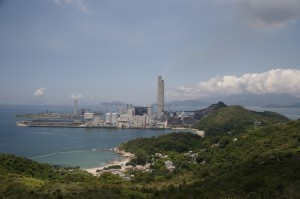
Photo Courtesy of Flickr.com
A little bit of the country side in the city. That is how you can describe Lamma Island best. It’s one of the many islands of surrounding Hong Kong. It’s small and cozy. You can only reach it by a ferry from the Central Pier.
When I took that thirty minute ferry ride, almost two years ago now, I arrived at a wonderful place: white sand, picture perfect beaches, palm trees, and an abundance of bright green plants and tree leaves surrounding me everywhere I went. But most of all, there was something about the relaxed, hippie-like atmosphere of Lamma Island that inspired me.
You see, atmosphere is something you can find everywhere you go. Every place has its own atmosphere and it is always different. Hong Kong’s atmosphere, its flavour, its air, the feeling of the city, is one of business and endless possibilities. The skyscrapers looming large against the backdrop of Kowloon seem to say “the sky’s the limit”. The cacophony of neon signs and street sounds overpower your senses at times. The walkways and different levels of the city confuse the average pedestrian’s mind and sense of direction. After a few days of Hong Kong, I absorbed its atmosphere and started to feel a little rushed by all the hustle and bustle going on around me in the city’s streets.
How different it was when me and my friend stepped out of the ferry and set foot on Lamma Island. I had read two enthusiastic lines in my guidebook about the island. Then, a friend of mine who had lived in Hong Kong for a while told me to definitely go to Lamma Island. Whenever you get the same tip twice, there is just one thing to do: go.
Lamma Island is an oasis of green lying in the bright blue and glittering sea surrounding Hong Kong. It is so tiny that there are practically no roads for cars – which are also not allowed on the island. There are two tiny villages, one on each side of the island: Yung Shue Wan and Sok Kwu Wan. A trail crossing the hill connects the villages. While me and my friend made the hike to the other side of the island, I remember thinking to myself: why don’t I take a walk more often?
We passed a beach, with white sands, trees for shade, and a cool blue sea with (strangely enough) a power plant in the background. Some people were swimming to cool off in the hot summer weather. Others were chilling in the shade of a tree or a parasol. Inevitably, I thought: if I would live in Hong Kong, I would come here every weekend. But then the realistic-slash-pessimistic side of my brain kicks in and says: hah, as if! I probably wouldn’t go to this perfect beach every weekend. I would feel like it’s a waste of time – even though it isn’t.
My parents’ even live a ten-minute walk from the beach. Granted, it’s in the Netherlands and most of the time it’s cold and windy (sometimes even in the middle of summer!), but there is a beach nonetheless. Yet somehow I always feel like it’s a waste of my time!
Thinking about Lamma Island and its atmosphere, then, makes me think about all the things I should be doing right now and how to make a better use of my time. How I should walk more (like I did on the island) and go to the beach more often.
This is one of the reasons you should travel. To have great memories like this that you can dig up from the archives in your brain. To think about a sunny, green, palmtree-populated, white-sands-beaches island far away in Hong Kong. Even when the temperature’s close to zero and I hear the wind beating against my windows, I can think of Lamma Island and I’m inspired.
About the Author: Corianne Oosterbaan hails from the Netherlands and is almost graduated from a degree in business administration She loves to travel and see the world. She also loves to write – fiction, essays, and travel writing. Find her on Twitter and on her blog curating interesting stuff from the online world.
Thank you for reading and commenting. Please enter our next Travel Writing competition and tell your story.
The post Thinking about Lamma Island, Hong Kong appeared first on We Said Go Travel.
Home in the USA: Where Inspiration Never Stops
 All around the world, there are iconic landmarks, natural wonders, and documentable moments in which we are able to take in with such awe and amazement. It is with these places, these people, and these experiences that we are lead to fall deeper into wanderlust and yearn for more minutes, more seconds, in every day we wake up. But with every mile we walk, ride, and fly, we are simultaneously removed and rooted into where we call home. It is a traveling paradox that forever captivates the vagabonding mind, body, and soul.
All around the world, there are iconic landmarks, natural wonders, and documentable moments in which we are able to take in with such awe and amazement. It is with these places, these people, and these experiences that we are lead to fall deeper into wanderlust and yearn for more minutes, more seconds, in every day we wake up. But with every mile we walk, ride, and fly, we are simultaneously removed and rooted into where we call home. It is a traveling paradox that forever captivates the vagabonding mind, body, and soul.
The minutes abroad, in a different state, or even in the next town over are no more important or fascinating than those spent at home. In fact, the exploring and adventures will never halt upon returning from your travels across the globe. For myself, there is no day like the one spent back in Philadelphia, Pennsylvania. It is the City of Brotherly Love, and relishing in such intrinsic delight is something I could never regret.
When anticipating my return to Philadelphia or hosting a visiting friend, I shiver to think about all that this artistic city has to offer. It is home to more free standing art sculptures than any other American city, including the unmistakable LOVE Statue. While most people flock to Love Park for such a romantic photo opportunity, many people fail to realize that there is actually a second smaller but identical LOVE Statue just over on the University of Pennsylvania campus. Which ever you chose to grace your presence with, rest assured that you are witnessing a staple of Philadelphian artwork.
This Northeastern city of the States is one that often falls in the shadows of its neighboring cities: New York City and Washington, D.C. This overlooked wonder we Pennsylvanians call Philly, provides for a comforting yet unique experience with each time you walk its streets; regardless of the day or time of year, Philadelphia will take you on a charmed journey of historical flavors combined with modern amusements. To spend your day wisely, there are several things you always have to do, but there are also excusive must-dos that are specific to the time of year you are visiting.
Whether you are running the Art Museum steps like Rocky or standing in the signing room of Independence Hall, there are several ways to get that true Philadelphian experience, and it starts in Old City. Reflecting off of the Delaware River, Old City takes you back over 200 years with key points in American history. From Christ Church to Independence National Historical Park, the cobble stone streets in between will guide you through the birthplace of American freedom; you know you cannot leave this city without giving the Liberty Bell a proper visit or wandering the very streets our Founding Fathers once treaded.
Before heading inward to center city and in order to fuel your full day of festivities, make sure to swing by the best cheesesteak joint in Old City: Campo’s on 2nd and Market. You have not given your taste buds a true cheesesteak until you have visited Philadelphia, and Campo’s accomplishes it all from the freshest hoagie rolls to the juiciest sliced steak. You will savor each bite and no other steak sandwich will ever taste the same (if you even give another cheesesteak a chance). Make sure you enjoy every calorie, before making your way to City Hall and later for a night watching the Phillies.
So you have gotten your history lesson for the day, and you have now made it to beautiful City Hall with William Penn looking over you. It is definitively the most stunning building within the Philadelphia skyline, and just across the street you will catch yourself looking back at Love Park. It is just a few short blocks from the scrumptious Reading Terminal Market (if you really needed more to eat after your cheesesteak), and the iconic architecture fills you with an overflowing amount of Philadelphia spirit. And now you are a straight shoot away from one of the greatest sport experiences in the United States. Grab a waterice from Rita’s and get your tickets ready, because we are about to end our day at Citizens Bank Park to cheer on the Fightin’ Phils!
The sports scene encompasses the entire Philadelphia atmosphere: it is one that is filled with passion, commitment, and sheer camaraderie. The highs are high in this great city, and it will truly make any traveller feel like they are surrounded with love. While no one can take time from anyone or take the home out of one’s soul, Philadelphia will always give you that at-home, comforting feeling, even when you are thousands of miles away. It truly is a timeless city and a day you will never regret.
About the Author: Mallory Pié is an independent travel writer from Eastern Pennsylvania, United States. She is the creator of the blog ‘Dear PA, From Everywhere’, in which she writes letters to home about her travels across the globe.
Thank you for reading and commenting. Please enter our next Travel Writing competition and tell your story.
The post Home in the USA: Where Inspiration Never Stops appeared first on We Said Go Travel.
Off the Grid in the Western Ghats in India
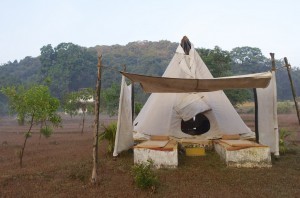 We eyed the accommodation warily. The choice was either a canvas tipi or a room in the stone-built house, with gaping holes where windows would normally have been. Although no one voiced their concern, we were all thinking the same thing: that neither would afford us much protection from marauding wildlife.
We eyed the accommodation warily. The choice was either a canvas tipi or a room in the stone-built house, with gaping holes where windows would normally have been. Although no one voiced their concern, we were all thinking the same thing: that neither would afford us much protection from marauding wildlife.
With no electricity, no cell phone reception, no internet and no close neighbours, help wouldn’t be arriving quickly, either.
This remote mountain homestay that was to be our home for the next three days was so far off the beaten track that the last part of the journey had been made on foot. It was literally a clearing in the jungle.
Under a blue, sunny sky it had looked quite benign, and the notion of an off-the grid experience was exciting, intrepid even. But as daylight slipped away and the first stars twinkled overhead, the forest encircling the grassy clearing seemed to press in on us, the sounds coming from within it ominously magnified.
Up in the Western Ghats, the 1000-mile long mountain range that runs parallel to India’s west coast, humans are vastly outnumbered by wildlife. The evergreen forests in this region are among the ten most biodiverse spots on Earth, home to over 5,000 species of flowering plants, as well as countless reptiles, amphibians and mammals.
Over hot, spiced chai our host, Sylvia, a journalist turned potter, had put us in the picture. The evergreen forest surrounding us on all sides was a protected wildlife corridor: monkeys, deers, sloth bears and snakes lived just beyond the tree line. Elephants tended to stay on the other side of the valley, but big cats hunted nearby.
In fact, her dog had been taken by a leopard in the night, not so long ago. It was this last, casually delivered detail that had caused a ripple of alarm to run through the five of us, and that resonated in our ears as we bedded down the first night.
We survived the night unscathed, however, and awoke to birdsong and the sound of the fast flowing stream only yards from our tipi. Our sense of adventure restored, we donned walking shoes and followed our guide through damp, shady woods, along rocky ledges and across shimmering grasslands, eventually emerging at a hidden waterfall.
Diving into the icy water with childish abandon, we squealed first at the cold, and later, as we rested on river rocks, at the tickling sensation of tiny shrimp that nipped at our feet.
By the time we squelched back to base camp through ankle-deep mud, we felt like such intrepid adventurers we barely flinched as we brushed squirming black leeches off our feet, before tucking into a hearty meal cooked over an open fire.
As the sun beat down in the afternoons and the hum of a thousand crickets built to a crescendo, a contented silence settled over us. With no emails to check or text messages to reply to, we whiled away the hours swinging gently in cane chairs, chatting idly, occasionally dipping our feet in the tiny, river-fed plunge pool and watching emerald green birds flitting from tree to tree.
This lack of contact with the outside world was, we quickly realised, just as rare and refreshing as the experience of being in such close proximity to pure, unbridled nature. Our fear of being mauled by wildlife had faded quickly and we felt instead invigorated by the ‘otherness’ of a place where monkeys eating one’s crops and mango trees that threatened to fall were the issues that kept one up at night.
In an environment unsullied by modern technology, it would have been somehow crass to reach for an iPad or smartphone and their absence felt oddly cleansing.
Early one morning, I joined Sylvia to go pick up some river fish for our dinner. In the pink light of dawn the forest was silent and the dew heavy on the ground, soaking our feet as we walked.
The fisherman’s house was several miles away and across a rickety bridge made of little more than bundles of sticks. We passed simple mud-built houses, where a ladies squatted, stirring pots over open fires on their porches and children washing in the river; we passed men herding their buffalos, and crept past a herd of bison grazing in the woodland. Every scene was softened by the misty light of early morning.
An hour or so after setting off we reached the fisherman’s house.
Alas, we were out of luck. He had no fish that day.
Ah, well….. fish or no fish, the walk had been an eye-opening and energizing one, and another day of sunshine, tranquility and relaxation lay ahead. We shrugged and turned back the way we had come.
About the Author: Natasha Were is a passionate traveller and incurable dreamer. Besides exploring new destinations she loves cooking, diving, growing things, yoga and books.
Thank you for reading and commenting. Please enter our next Travel Writing competition and tell your story.
The post Off the Grid in the Western Ghats in India appeared first on We Said Go Travel.
April 16, 2014
The Classroom in Thailand
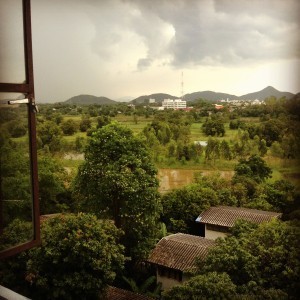 This morning I had a dream about being in the classroom again. I awoke to the grandfather clock that chimes every fifteen minutes throughout the house, feeling like I had seen them. In my dream, I’m standing at the head of a non-air-conditioned classroom. All ten ASEAN flags dangling from the walls. Five rows of five pairs of wooden desks are covered in whiteout and ink doodles. Each desk chair is filled with a light blue uniform top and navy skirt or shorts. Fifty pairs of shoeless white socks rest beneath them.
This morning I had a dream about being in the classroom again. I awoke to the grandfather clock that chimes every fifteen minutes throughout the house, feeling like I had seen them. In my dream, I’m standing at the head of a non-air-conditioned classroom. All ten ASEAN flags dangling from the walls. Five rows of five pairs of wooden desks are covered in whiteout and ink doodles. Each desk chair is filled with a light blue uniform top and navy skirt or shorts. Fifty pairs of shoeless white socks rest beneath them.
I can see their faces: Belle’s is round and whitened, framed by her dark bangs. Beam, with his thin-rimmed glasses smiles at me as if to challenge whether or not I remember his name, his face tilted like a question mark. I see Peam’s wide grin he’d photographed multiple times on my iPod on our last day of class together. In each photo, his smile grows wider and whiter, his eyes closing tighter as if in a flipbook. Their names and class assignments stitched in navy on their shirts scroll like film credits across my sleeping memory, the grandfather clock chiming its end-song.
I had fifty minutes every week with each class of 30 to 50 sixteen and seventeen-year-olds to practice their English-speaking skills, the end of each class marked with the school bell’s tune. We were assigned the top floor of the blue Foreign Language building with open-air hallways overlooking fields of short and tall crepe myrtles and muddy puddles. Green hills spread out in the distance like supermarket broccoli heads. It was a view that made us feel like we were in the depths of rural Thailand instead of the capital city of our metro-Bangkok district.
Our first weeks together, we practiced Show and Tell. Each student was to bring in one special object and tell the class why it is special. One minute, one person, one object. With just fifty minutes to use before the bell, we moved through each minute as if we were an orchestra. As I weaved through the desk rows, humidity clung to my skin as their eagerness to share their stories clung to my spirit.
The boys talked about the special things their girlfriends once gave them: crusted roses kept secret in shoeboxes, bracelets tied by hand, love notes with more cluttered doodles and neatly penned Thai script. In the special science-and-math-track class of 30, May, with frizzy, long black hair tied in a puffy ponytail and too-small glasses, got up in front of the class with a pair of once-shiny, white satin ballet shoes.
“Teacher, today I speak about my ballet shoes. I have no more time because of special classes in biology. I can’t go to dance class anymore.”
May pulled her glasses on top of her head, dabbed her eyes with the tissue she had crumpled into a ball in her hand.
“I love to dance, Teacher. But I must choose.”
Five months into my return home to the Metro Detroit suburbs, snow blanketing our lawn and the outside air bitter and biting, I begin to dream about the sweat that dripped from my hairline when I would teach on that top floor. The grandfather clock ticks at every second, a reminder that time is passing. That time has passed. I stare out at our wood-lined backyard as I wash the dishes, at the tiny deer tracks left behind in the snow around the maples. The water warm on my knuckles, I daydream of the sweeping views of the green hilltops as I scrub tomato sauce from white plates, thinking about the classroom when thunderstorms were on their way. Above the hills, the clouds shaped themselves into cotton balls soaking up black dye. The breeze would flow through the windows and doors, teasing us in a temporary, humid but nourishing coolness. Once, the clouds had distracted Jet from my new lesson on how to mean what you say when answering university interview questions. Jet sat in the back with his chin resting in his palm, picking at his chin-pimples with his nails. Briefly, I imagined what it was that he could be imagining himself before I slapped my hand-fan firmly on his desktop.
He jumped, shifted to sit up straight, and smiled. His grin inched toward his earlobes, sweet, apologetic, with a wisp of innocent defiance as the rest of the class giggled behind me.
“Pay attention,” I’d said as sternly as I could, trying not to smile back.
“Yes, Teacher. Sorry, Teacher,” Jet smiled again.
It’s okay, I thought, I would be, too.
About the Author: Teresa Mupas is an amateur daydreamer and English instructor who likes beer, punctuation, and compact items that fit neatly and quietly in carry-ons. She practices yoga in her bedroom, folds love notes into origami lotus flowers, and occasionally writes about that which she dreams.
Thank you for reading and commenting. Please enter our next Travel Writing competition and tell your story.
The post The Classroom in Thailand appeared first on We Said Go Travel.
A South African Adventure Leads to Authentic Living
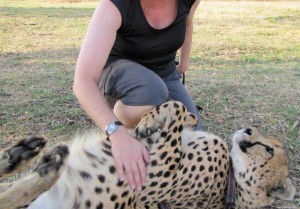 An South African Adventure Leads to Authentic Living
An South African Adventure Leads to Authentic Living
Last weekend I gave a presentation at a Singles Summit about online dating. This is something that, three years ago, would have seemed silly. But I was 39 then. I turned 40 in South Africa and that’s when life changed … or, more precisely, that’s when I took a hard look at how I was spending – or wasting – my time.
In October of 2011, I was deep in the African bush celebrating my birthday among the lions and elephants and cheetahs of the KwaZulu-Natal region. Besides seeing these amazing wild animals in their natural habitat, I learned how important the safari industry is for many countries in Africa. Unfortunately, poaching has reached crisis proportion for African elephants and rhinos. How sad to think of future generations only being able to see these wonderful creatures in zoos and sanctuaries. The safari industry is combating poaching in a number of ways, but the simplest way is by merely existing. Think about it. Travelers to the African bush want to see rhinos and elephants. If these animals go extinct, there’s no safari industry and locals lose their livelihoods. Many of these same locals were once poachers. Now, they’re part of the safari industry and the conservation movement as they realize the devastating economical impact poaching could have on their towns and villages.
During my stay, I went on drives twice a day with the safari rangers. While on these drives, I got to know the rangers and learned about their individual roles in the conservation movement. They were spending 11+ hours a day with visitors and then using their free time to protect the creatures living on the reserve. It would seem that their lives were devoted to conservation efforts and teaching others about those efforts.
Then I thought about my own life and how small it seemed in comparison to those on the front lines of the wildlife preservation work in South Africa.
While I was doing important work with small cats at a local non-profit, the reality was that I was burned out. Things were no better at home because not only did I lack a meaningful relationship, I was living with my ex husband and too many cats. I was also juggling extra jobs to keep the house afloat. Given these circumstances, how could I even think about having a richer, more purposeful life?
A month after returning from South Africa, I was alone on a housesitting job over Thanksgiving weekend and I started thinking long and hard about my existence and how I was spending my time. Being caught up in unhappiness at home and at work wasn’t moving me forward and it certainly wasn’t helping me contribute to the greater good.
Life in the African bush is about survival – there’s no guarantee that tomorrow will come as predators are always lurking. While the African bush seems vast and endless, its creatures are not. That’s what I took home with me … a sense of urgency. What if, like the elephants and rhinos, I was about to be extinct?
I wondered what action step could I take, right then and there, to change just one thing about my life? I pulled up my online dating profile, and began revising it – this time speaking from the heart especially about the impact the time in Africa had on me.
Later that evening I received a message from another traveler. He, exactly a year later, became my husband.
Since my trip to Africa, not only have I changed my relationship, I’ve changed my address and my career, too. Part of my new life is working with people to connect them to authenticity with their relationships, with their travels and with themselves.
A conversation I had at the Singles Summit helped me finally verbalize the way my African adventure touched me. When we are our true selves, we attract authenticity in love and life. Our time can then be spent in more meaningful ways and the world – maybe even the elephants and rhinos – benefit from it.
About the Author: Amy Angelilli married the love of her life on the anniversary of their first communication on a dating website. Now that she’s no longer busy online dating, she has more time for adventures such as meaningful travel, live concerts featuring ’80s bands and improvisational theater.
Thank you for reading and commenting. Please enter our next Travel Writing competition and tell your story.
The post A South African Adventure Leads to Authentic Living appeared first on We Said Go Travel.
El Chalten, Argentina; Food for the Soul
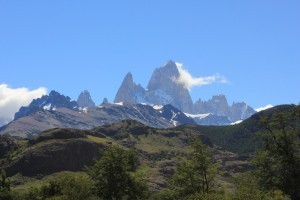 A short bus ride on from El Calafate; the road winds and bends through soft rolling hills and long ribbon lakes until the almost gothic peaks of the Fitzroy range start to become visible. El Chalten holds some of the most unclimbable peaks challanging even those who think everest is a walk in the park. The Fitzroys without doubt leave an impression. Vertical sharp shards of granite rise high into clouds from steep green mountains. EL Chalten also leaves an impression. Like “why am I here?!” People strolled around this mountain strewn town in thousands of pounds worth kit, all muscly and tanned having had 5 days roped to a precipice living off adrenalin and will power alone.
A short bus ride on from El Calafate; the road winds and bends through soft rolling hills and long ribbon lakes until the almost gothic peaks of the Fitzroy range start to become visible. El Chalten holds some of the most unclimbable peaks challanging even those who think everest is a walk in the park. The Fitzroys without doubt leave an impression. Vertical sharp shards of granite rise high into clouds from steep green mountains. EL Chalten also leaves an impression. Like “why am I here?!” People strolled around this mountain strewn town in thousands of pounds worth kit, all muscly and tanned having had 5 days roped to a precipice living off adrenalin and will power alone.
Our milky white slightly wobbly bodies didn’t blend into the throng but we were not to be defeated! We headed for the Fitzroys at first light. Well at about half past eleven because I needed a third cup of coffee and a pastry and Simon needed to clean his lens….. Again!
The first few hours were twisting footpaths through fairy tale like woods next to a pastel blue stream. Views came and went of glaciers, valleys and clear blue skies. That last hour was a bit less fairy tale and a bit more Saw III. Simon scoffed at my suggestion that the 70 degree hill in front of us was the way up. It was a thin rock strewn path, very steep, a bit slippery and with no ability to slow down as there were people behind. We felt completely in our rights to whinge until a saga holiday group all well within their seventies started gaining ground. We had no option to pick up pace and to stop breathing quite so hard when people passed on the way down…
Simon didn’t even chew his sandwiches and drained 2 litres at the top of the 70 degree endurance clamber. All the efforts were put into perspective as the final push led up to the postcard perfect view of glacier fed lakes full of deep turquoise all backed by the Fitzroy peaks and glaciers from one of the biggest ice fields in the world.
The walk down felt like walking on hot coals with us both making various excuses to stop. Must taste this glacier water, need to tuck in my laces, need to clean my lens… Again.
A steak the size of Simon’s head was consumed. I had a salad bowl/ cauldron. Argentina works you hard but rewards you well. There is nothing you can order that is either wholly good for you or in appropriate portion size. As such I have indulged in the four pastries for breakfast and have a disgraceful addiction to dulce de leche. For those who haven’t come across it, it’s like the consumable sin- no nutritional goodness but absolutely food for the soul. On toast, on pancakes…ON A SPOON is what I say!!
Day two we walked on a glacier. I did so disgruntled after it was publicly announced my crampons needed to be ULTRO LARGO and the group sniggered. Simon did feel slightly emasculated by his plain old ‘largo’…
Walking a glacier and winding through ravines was bizarre with odd shapes and shades of blue it was like an alternative world. Crampons on and walking like monkeys we stood in ice caves, jumped over glacier streams and walking over thin passes from one ravine to the next. As we stood with a glass of glacier-iced baileys before catching the boat back the most enormous chunk of the glacier came away…. The size of a 10 storey office block fell to an almighty rumble, crack and smash as it hit the lake and a 20ft wave rolled over the rocks just metres from our viewpoint. Something deeply moving seeing a 500 year old piece of ice fall so spectacularly. An honour to bear witness.
We had intended our final day to climb again towards another peak but the wind picked up, blue sky replaced by racing clouds. A down day of DVD’s with our hostel family, mugs of coffee, Sebastian’s (hostel owner) flamboyant swearing and professional climbers talking of their conquests and failures.
El Chalten is worth a visit whatever the weather. It’s a tiny make shift town on a peculiar green plateau surrounded by crystal rivers dropped amongst the guardians of glaciers and forests- the giant peaks. It was somewhere we found always offered inspiring stories, extraordinary landscapes and buttock ache.
About the Author: Faye Clarke is 36 and an incorrigible traveller..
Thank you for reading and commenting. Please enter our next Travel Writing competition and tell your story.
The post El Chalten, Argentina; Food for the Soul appeared first on We Said Go Travel.
April 15, 2014
Mcleodganj,India:Musing over my muse(s)
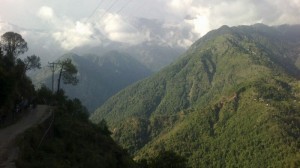 MCLEODGANJ, INDIA: MUSING OVER MY MUSE(S)
MCLEODGANJ, INDIA: MUSING OVER MY MUSE(S)
Breathless and unable to fight the temptation, I surrender. The comfort of rest offered by the rocky ledge and what lies before me is irresistible.
I am just a few minutes away from completing Kora, the circular trail around Tsuglagkhang complex. The valley stands before me with arms flung wide open, inviting me, seducing me, challenging me. I give up, take out my sketchbook and start painting. Nature turns into my muse.
Two Tibetan girls in their early teens pass by. They stop to look at my sketch. The younger one whispers something in the older one’s ears and they start giggling. They seem oblivious that their laughter is making me doubt my artistic skills. I pretend to remain unfazed but curiosity gets the better of me.
‘What are your names?’
‘I am Tsomo and she is Tashi’
‘Is there something wrong with my sketch?’
‘No, it’s very good.’
‘What is making you laugh then?’
‘My sister wonders if you can make her picture.’
‘It can take time and your family might get worried.’
In a moment their expressions change. I have hit some soft spot.
‘Mother and father could not make it to India. We were brought here by our grandma and now she is also dead. We live with our community.’
Silence.
I am not an ardent fan of awkward silences and consider it a sort of moral obligation to fill any such pauses. Plus, there is a fraction of resemblance that my otherwise blessed life has with theirs. The fact that I also had lost my parents early in life, urges in me an instant need to connect with them.
‘O.K, how about I make a sketch of you both?’I find myself saying despite my dreaded incompetence as a portrait maker.
They both smile .I start making an effort to sketch them and fortunately somewhere midway , time comes to my rescue. The girls tell me that they really are getting late. Making a resolution of brushing up on my portrait making ability, I wind up and on the sisters’ request, I follow them as they want me to meet someone they are very fond of.
They introduce me to Pema, a young girl who dotes on them like an elder sister and bonds with me with equal ease. On realising how little I have seen of Mcleodganj in my one day stay, she decides to show me around. Over the next few days, I get to explore the opulent glory offered by this hamlet and revel in a euphoric sensory feast in her company.
Sitting by the side of the Bhagsu waterfall ,we look at sunbeams create unfathomably intricate patterns on the surface of water. I tell Pema that I need to jot down a poem before my thoughts flee. She finds me incredibly talented. It’s a blessing to be able to write and paint, she tells me .
Every day, myriad delights await us and hold us enchanted. St. John church situated in the wilderness and dotted with pristine charm of flowers, climbers and creepers stands serene with its timeless vibe. At Naddi village, clouds floating next to us are transcendental and w e laugh our way into a sublimely perfect sunset. The main market with bustling cafes is tailor-made for my flamboyant side. Chats with monks and nuns are both engaging and interesting. Shopping as usual is fun and the camaraderie I have developed with Pema is special.
Her familiarity with each nook and cranny of the town is unmistakable. She tells me that she was born and brought up here .I notice a shadow of sadness in her radiant smile. She speaks of her people’s longing to go back to Tibet and their peaceful struggle for freedom. We are in Tibet museum looking at archived evidence of suffering that human species is capable of inflicting upon their own kind .Pema gets from me a promise that I will teach painting and whatever else I can as a volunteer to exiled children during my next visit to the town. She adds sadly that she would be leaving for abroad in another three months and is not sure about her coming back. But, she is sure about me coming back.
I know that I will be back. To this place where rocks whisper songs, waterfalls chant melodies, mountains weave stories , cafes and shops pulsate with life. Where Pema’s people live, where hope lives, where love lives. Where Tsomo and Tashi found home and my creativity found a new meaning.
I will be back to this place where I am sure, each day inspiration will come to me in different avatars. As innocent children’s smiles, as youngsters’ dreams, as serene maturity of wrinkled old faces, as a friend’s uninhibited laughter and her unseen tears. As the precious satisfaction of spending my time without regrets.
About the author: Nandita Bhargava-A vivacious spirit, a heart full of compassion, a sense of childlike wonder, insane optimism , citizenship of the Zen world and the belief that to live life fully you have to love life fully, are the things that keep me headed towards new journeys. Writing ,painting and travelling are my salvation and pitching in my little bit to add to the happiness of this universe, a must-do. I do not have an iota of doubt that the world was intended to be a place without any boundaries.
Thank you for reading and commenting. Please enter our next Travel Writing competition and tell your story.
The post Mcleodganj,India:Musing over my muse(s) appeared first on We Said Go Travel.
Passover: Finding Balance and Freedom on Tax Day
For the last year and a half I have been living in Asia and eating rice. As I thought about Passover approaching, I figured giving up bread for eight days would not be meaningful as I really only eat rice in Thailand. I contemplated what could I give up that would be a daily reminder that the Jews were slaves in Egypt and when we were forced to leave in a rush, we ended up with only matzah to eat.
May all who are enslaved throughout the world, come to know freedom. May all who are free, appreciate the blessings of abundance. And may all of us dwell in the house of God and give thanks for our good fortune as we celebrate these rituals of Passover. (Opening Prayer from 30Minute Seder)
The struggle to find freedom resonates with me. I have considered giving up the Internet for eight days and wondered about how to run We Said Go Travel and not be online at all. But we do not give up wheat for Passover we give up, leavened bread. So perhaps giving something up 100% is not right but rather choosing wisely and with intention is more meaningful.
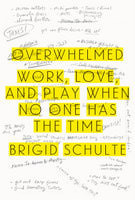 In Overwhelmed: Work, Love and Play When No One Has the Time, Brigid Schulte honestly discusses being a working mother and how her life is out of control with no leisure time–hers is a “frenetic family.” She is shocked when John Robinson states that she has thirty hours of leisure time a week and quests to understand where does her time go. As she researches the origins of leisure and who feels in control of their time, she goes to time conferences, meets wonderful Danish people with plenty of time and even learns to fly on the trapeze.
In Overwhelmed: Work, Love and Play When No One Has the Time, Brigid Schulte honestly discusses being a working mother and how her life is out of control with no leisure time–hers is a “frenetic family.” She is shocked when John Robinson states that she has thirty hours of leisure time a week and quests to understand where does her time go. As she researches the origins of leisure and who feels in control of their time, she goes to time conferences, meets wonderful Danish people with plenty of time and even learns to fly on the trapeze.
Her explorations remind me of SCUBA Diving, where we say, “Plan your Dive and Dive your Plan.” First, she works to discover what are her priorities and then creates a way to live them. Everything on her to-do list does not get done but the meaningful connections she needs to feel joyous do. I want to live “a life of leisure [which] was the highest aim of a human being. True leisure, the Greeks believed, free from the drudgery of work, not only refreshed the soul but also opened it up.” For Schulte, “role overload” and “contaminated time” have to end in order to move forward and she is willing to make the literal and figurative leaps!
The cult of being busy does not allow us to make a commitment to doing the things that feed us in work, love and play. Are you ready to get off the track of the “everydayathon?” The way off of the hamster wheel involves being able to answer “three questions that drive so much of the unending overwhelm: • How much is enough? • When is it good enough? • How will I know?” Schulte admits for herself it is a work in progress but she and her husband are looking at their parenting roles and household responsibilities and how they can support each other and their family in a way that works for everyone.
Sarah Blaffer Hrdy argues that with the support of “cooperative breeding” and “alloparents…in human evolution, mother’s lives were more integrated between work and home.” Many women feel alone in their daily struggles; bringing back the village may allow time for each individual to become as self-actualized, self-efficacious and joyous as possible. Managing and having appropriate expectations can create change that feels like freedom.
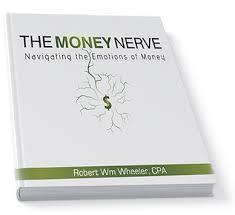 Finding independence from being bound to technology or bread or our ideas requires thoughtful contemplation. This year as Passover begins, taxes are due. April 15 is a day of dread for so many Americans. My friends are worried about being audited, paying the bills and what do they owe for taxes. All of this concern about money is similar to the drama in Overwhelmed about not having any time to do what you want, Robert Wm. Wheeler in The Money Nerve explains that you have the money you need to do what you want. He can help you and be your guide to a life of meaning and money.
Finding independence from being bound to technology or bread or our ideas requires thoughtful contemplation. This year as Passover begins, taxes are due. April 15 is a day of dread for so many Americans. My friends are worried about being audited, paying the bills and what do they owe for taxes. All of this concern about money is similar to the drama in Overwhelmed about not having any time to do what you want, Robert Wm. Wheeler in The Money Nerve explains that you have the money you need to do what you want. He can help you and be your guide to a life of meaning and money.
As Wheeler states, “There is a lot of fear and shame surrounding money. We need to start admitting without shame or embarrassment that we may not have been taught how to handle money (or that we may not know all the answers). We need to bring our money issues out in the open and start changing our belief system about money.”
Being honest about your choices allows you to be end your enslavement. Wheeler’s clients tell him: “I need a TV…or…I need to go to Hawaii.” But Wheeler reminds them: “They are wants, not needs. They want those things. They need oxygen; they don’t need the newest cell phone. Once you start to hear your own voice, you can begin to give yourself alternative choices, which will change your mental map.” With the Money Nerve, Wheeler helps you figure our your finances and how to make your dreams come true as well as get your taxes done on time without drama.
When Wheeler says: “Your goal is to move forward as who you truly are. Live the life that you choose to live. To me, living a life without restraints and self-judgment— and living it with gratitude—is what makes everything worthwhile,” I want to run to his next workshop. The priorities we choose create our life and as Wheeler says, “make sure they match your desires.” There are 1,440 minutes in each day and 168 hours in a week, you can spend each moment only once. What will you pick?
As far as changing your life, Schulte says: ““I’m not saying it’s not hard. But I am saying it’s like you’re wearing the ruby slippers. You have the power. You’ve had it all along.” When you click your heels three times, what will you wish for?
I hope that this Passover week you find freedom from what enslaves you. Remember your life is the compilation of the choices and non-choices that you make. Choose wisely and with intention. Hag Sameach!
Video: Maccabeats’ Passover Music
About this Article: Lisa Niver Rajna, M.A. Education, is a passionate writer, educator, social media ninja, speaker and global citizen, who has traveled to over one hundred countries and six continents. She is the creative spark behind We Said Go Travel and just returned from filming in Puerto Rico with Richard Bangs and White Nile Media.
The post Passover: Finding Balance and Freedom on Tax Day appeared first on We Said Go Travel.
Ei-chel, Paris, France
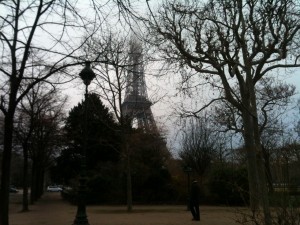 We all have our routines. We go to and from work. We drop off and pick up the kids from from school. We run errands. On weekends we try to get out for some exercise.
We all have our routines. We go to and from work. We drop off and pick up the kids from from school. We run errands. On weekends we try to get out for some exercise.
I am no different. But I am fortunate that my routine unfolds on and around the Champ de Mars, the park on Paris’s Left Bank that is home to the Eiffel Tower. My wife, Ashley, and I are Americans who have been living in Paris since 2010. Our first apartment was in the east of the city, far from the Eiffel Tower. In early 2011, we moved to a tiny top-floor studio that boasted a full-on view of la grande dâme, as Parisians call her. In 2012 our son, Miller, was born, necessitating a move to a larger apartment on the other side of the Champ de Mars.
When Miller first started speaking, Ashley taught him to call the tower by her name. Perhaps it’s the tower’s graceful feminine shape — “not phallus into sky,” as Adam Gopnik writes in “Paris to the Moon,” “but skirt into bodice into long throat.” Perhaps it’s the way she soars above the nearby apartment buildings. Or perhaps it’s just the thing he’s happened to fixate on, as kids inexplicably do. Whatever the reason, he loves her. Our apartment is littered with Eiffel Tower paraphernalia — from tiny keychain Eiffels to a soft, fuzzy, anthropomorphic “stuffed animal” Eiffel. He calls her by her name, as often as he can, even though he hasn’t quite mastered the “f” sound: “Ei-chel. Ei-chel. Ei-chel.” Each time as if for the first time.
I have my approaching-middle-age worries. About my whether my career is advancing quickly enough, whether our money will go far enough, whether I’m being a good enough father and husband. And of course I have my routine.
And yet there are those moments. I am waiting at the bus stop in the early-morning dark, glancing from my watch to the “Next bus in X minutes” sign, wondering whether I’ll make it to my appointment on time, when her darkened silhouette catches my eye. I am walking home from work, when its searchlight sweeps across the sky, and the bustle around me on the sidewalk and street go momentarily silent. My son and I are hurrying across the Champ de Mars for our Saturday morning swim class, weaving among the tourists and their silly poses in front of the tower, when he sees her in all her unobstructed glory and calls her name. “Ei-chel. Ei-chel. Ei-chel.” Again as if for the first time.
It’s in those moments — when I allow myself to regard the Eiffel Tower with the same wonderment as when Ashley and I came here as boyfriend and girlfriend and posed in front of her as tourists ourselves; or when we were in the taxi from the airport early that January morning, just off the red-eye and starting our new life here, and we saw her familiar outline in the distance; or when threw open the shutters in that tiny studio apartment to behold her, our new neighbor, for the first time — that I remember how lucky we are. To be living in Paris. To have our routines and the rest of our lives play themselves out in a city so many people dream of, in the shadow of an attraction that more people visit each year than any other. To have the name of the tower be one of our son’s first words, and to have Ei-chel itself be one of his earliest and, we hope, enduring memories.
About the Author: Lawyer by day, diaper-changer by night, Matthew Benz lives in Paris with his wife and 22-month-old son. They enjoy traveling as much as they can, even if it’s the the boulangerie down the street for a pain au chocolat.
Thank you for reading and commenting. Please enter our next Travel Writing competition and tell your story.
The post Ei-chel, Paris, France appeared first on We Said Go Travel.
April 14, 2014
Working together in Kenya!
Stepping off the plane in Jomo Kenyatta airport, the moment of truth had arrived. 16,000kms from home, I hoped that the volunteer organization I had chosen, World Corps Kenya, was a credible group. After receiving my visa, I prayed that there would be someone on the other side waiting for me. I really was not prepared, after 17 hours flying, to find a hotel in Nairobi at 11pm. I have never been to Africa before, and traveling as a single female, was understandably apprehensive. Luckily, as I walked out onto the concourse, a small sign, written in pencil on a lined piece of paper, was amongst the crowd.
I met Graham and Anne, who took me to Anne’s house, where I met Anne’s children. The next day, I went with Anne as she delivered cakes to people around the city. I learned that I was worth a lot of cows and sheep, as men asked Anne about me. I also learned that it is VERY important to look both ways before crossing the street, narrowly being squashed by a bus. Anne and her family were so welcoming, and helped me to navigate taxis, mutatus (15 passenger minibuses) and introduced me to some local staples, such as sukuma wiki and ugali.
After leaving them, I took a bus to Voi, where I met Patrick, my volunteer coordinator. The next morning, James and a few other rangers came to get me, along with a bed, mattress and other supplies for the small towns near Lumo Sanctuary. Along the way, we picked up women and children, letters, water and food, and shuttled them to their respective destinations. I was overwhelmed immediately with a sense of community. Everyone knows everyone.
That sense of community continued at the Sanctuary, where I learned that this was a community conservation project, employing local rangers to help protect the animals in the grasslands south of Voi. I was able to go on scouting rides, help de-snare areas, and build traditional huts. It was wonderful watching so many people working together, with a common goal. Listening to the women sing as they thatched the roofs of the huts, really made me realize that, despite having very few material things, they still exuded happiness. I felt so privileged to sit in on a community World Vision meeting, and to volunteer at 2 local schools, where the students danced for me, and the adults I was tutoring started to make connections with the material they were learning.
Many people ask me if I felt homesick, or experienced culture shock, but I really don’t think I did. It was very easy to adjust to kerosene lamps and basin showers, listening to hyenas and elephants as I slept, because I knew the people around me were good people, who cared about their companions. Even going to the Pentecostal church, 5km away (walking) brought home the idea of community. Whether you know someone or not, you greet them, and they become your brothers and sisters.
Having this experience, it made me realize, that in our developed nations, are we really truly happy? We may have money to buy everything we need, but without community, a family, is our life complete? Perhaps it is just me, but I think we need to strive to reach out to our neighbours and start caring about them (especially in North America).
About the Author: Julie Soares is a Canadian teacher, who is currently in the UK, teaching Chemistry and Physics at an all girls school. She is an avid traveler, whose goal is to experience the world. With a passion for girls and women’s education, she hopes to move to a developing country to pursue this passion.
Thank you for reading and commenting. Please enter our next Travel Writing competition and tell your story.
The post Working together in Kenya! appeared first on We Said Go Travel.
We Said Go Travel
We Said Go Travel is a global community of over sixteen hundred writers with articles from every continent.
Stories are shared with photos and video from a perspective of the transformative power of travel. We Said Go Travel has hosted live and online events as well as travel writing contests around the world. ...more
- Lisa Niver's profile
- 57 followers



